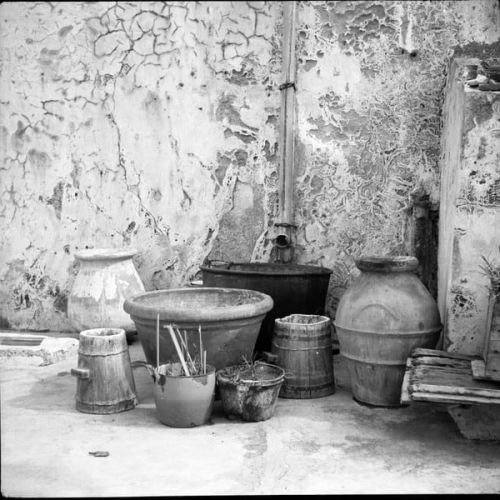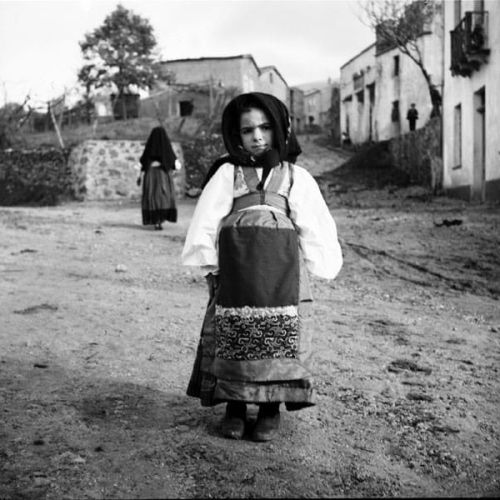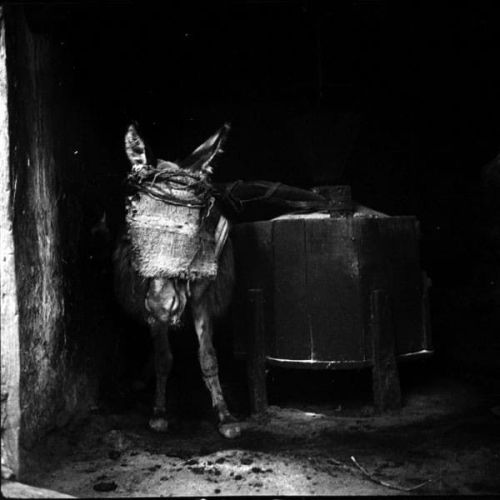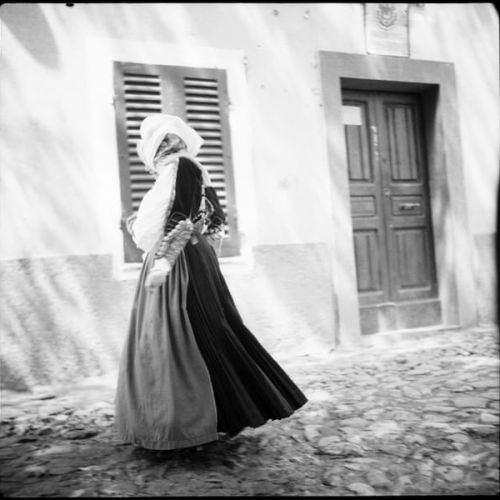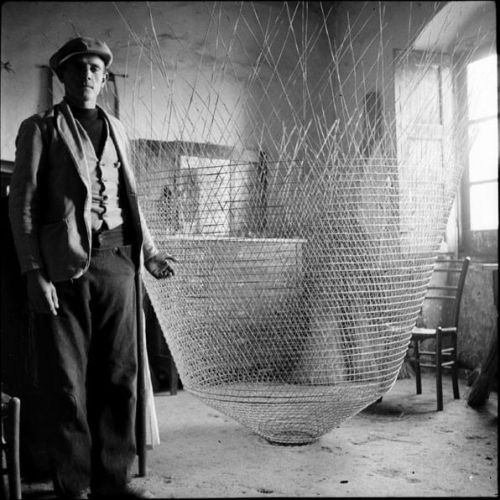«TINA MODOTTI» MUNICIPAL GALLERY – UDINE
In December 1932, Friulian philologist Ugo Pellis embarked on a long research journey across Sardinia, which led him, in the almost continuous course of three years, to systematically investigate the structure and peculiarities of the Sardinian language, for the drafting of the famous Atlante Linguistico Italiano. In the course of his ‘most noble but most serious’ work, partly together with his wife Nelda, Pellis visited 124 different places on the island, travelling thousands of kilometres on foot, on the backs of mules and on the wobbly wheels of a Balilla donated by the Duce, with his cargo of albums of illustrations, philological questionnaires, field notebooks and maps, which often made him appear a mysterious and funny character in the eyes of the people. Also in his luggage is a trove of photographic plates (later film) used to portray the reality surrounding his universe of words: men and things that, in the imagination of the scholar educated in Vienna and Innsbruck, are configured, from the outset, as a sort of inexhaustible sampler of archetypes of ‘Mediterranean-ness’. What emerges from his photographs is a taste for relating volumes and forms, an attempt to render sensations produced by landscapes, and a frequent search for the shot capable of revealing how small things echo the large ones, in a surprising play of cultural miniaturisations. The 36 works on display were all reproduced from Pellis’ negatives conserved by the Società Filologica Friulana and printed by the Fotociol art print shop in Casarsa della Delizia (UD).

Ugo Pellis was born on 9 October 1882 in Fiumicello (UD). He devoted himself to the study of romantic and Germanic philology and linguistics initially at the University of Innsbruck, where he worked under the guidance of Theodor Gartner (1843-1925), a pioneer of research into Rhaeto-Romanic languages, and later at the University of Vienna. After some experience in teaching, he undertook his first investigations at the beginning of the 20th century. From 1907 his writings appeared regularly in Friulan scientific journals while in the first decade of the century he published his first prose in Friulan (La ciana gargàna, Al rusignùl svuarbat). His scientific activity intensified with the passage of time, methodologically framing itself within the framework of the great linguistic investigations aimed at the construction of cultural areas on the basis of geo-phonetic traits. From such research came the first great linguistic atlases. In the climate of great fervour for philology, Pellis is among the founders of the Friulan Philological Society (1919), of which he will be president from 1920 to 1923. In the years that followed he took part in the conception, formulation and drafting of the Atlante Linguistico Italiano (ALI), devoting himself in particular to the drafting and testing of the extremely rich field form (the famous ‘Questionnaire’) which, based on the centrality of linguistic data, allows the researcher to return a profound and articulate image of the system of local cultural traits related to the subject in question. From 1925 to 1943, thanks also to being granted exemption from teaching, the Friulan philologist carried out numerous and continuous linguistic surveys in Italy and in the alloglots areas of Istria and Dalmatia, always with the utmost seriousness and faithfulness to his method of investigation. His greatest contribution to Italian philological research is probably the three years of fieldwork he spent in Sardinia from December 1932 to June 1935. The philological and photographic documentation collected during his seven trips to the island made up almost a third of his entire research activity. Before his death in Gorizia on 17 July 1943, he must have investigated 727 of the 1,000 places envisaged by his research, leaving an immense amount of linguistic and photographic material that is still largely waiting to be investigated in all its richness.
Also exhibited:
- 5 June – 13 September 2009, Heleneum, Lugano
- 9 October 2009 – 17 January 2010, Centro Comunale d’Arte “Il Ghetto”, Cagliari
- 28 January – 29 April 2011, Library of the Faculty of Letters and Philosophy, University of Turin
«Esovisioni» is a cycle dedicated to the peculiarities and paths of the vision of cultures through the photographic lens. The working hypothesis is that the photographer, taking the exhibition’s exotic image as a pretext has, consciously or unconsciously, returned his own inner vision, enriching the collective imagination with artful images and stereotypes of different cultural realities.


